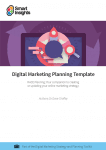There comes a time in every business when scalability takes front and centre. As difficult as the beginning stages were, scaling your business can be just as challenging
You’ve succeeded in proving that your business is viable, but now you have to make sure you achieve steady growth.
Scale too quickly and you can suffer from not being prepared. Scale slowly or unevenly and you may get stuck with employees you hired that you don’t need anymore. Overall, you need to ensure that the rate of your growth doesn’t hurt you in the long run.
How can you do that?
By coming prepared.
There are certain elements you can integrate into your business now that will ensure a seamless scaling process in the future and will also help if you ever need to get funding for your business.
These elements include:
1. Setting Up Automation
Integrating automation into your business can be a godsend in terms of saving time (which means saving money) and enabling scalability.
Automation can cover obviously repetitive processes as well as more complex processes such as marketing, sales, or payroll.
For example, rather than have an employee post every piece of content you create to social media in real-time, you can automate the process by taking advantage of software such as Buffer, to schedule posts for you in advance.
Not only does Buffer’s automation software take care of the tedious tasks related to publishing content, it also gives you access to helpful data analytics that can guide your content creation in the future. Not to mention, when automation software is taking care of publishing for you automatically, you have more time to create content, effectively scaling your marketing operations.
The same holds true for many other aspects of business that can be automated as well, such as:
- Marketing automation for email marketing
- Lead tracking and scoring
- Payment processing
- Accounting
- Customer service automation
- Small daily tasks that can be automated using tools like IFTTT
The more you invest in setting up automation to streamline processes now, the easier it will be to scale your business tomorrow.
2. Cloud Computing
Cloud computing enables all your IT computing services--such as, servers, storage, databases, networking, software and analytics--to be delivered in real-time over the internet.
The biggest benefit of implementing cloud computing in your business is its efficiency and scalability. With cloud computing, you can seamlessly expand your IT resources as your business grows.
And, as you continue to expand, cloud-based services can answer your needs for fluctuating bandwidth demands. Therefore, you won’t find yourself unable to operate when your business hits a higher capacity.
3. Long-Term Financial Perspective
Setting up your finances correctly from the get-go is imperative to ensuring your success as your business scales.
In order for your business to survive in the long run, your revenue must exceed your costs. However, if you’ve already managed to master this and generate profit, don’t immediately whisk that money away from the business.
If you want to scale, you have to think long-term. Therefore, as you begin to generate profit, put some money aside in order to re-invest it into the business when you’d like to expand. This way you’ll be less inclined to find outside investors for scaling and can keep control over the majority of your business.
You can even invest a portion of your surplus profits in liquid investment classes so that when you don’t need the money, it will steadily increase in value. And, when you do need it to help you scale, you can liquefy the assets quickly and reinvest them in your business.
Many businesses invest in securities for a variety of reasons. The benefit to investing surplus profit is that your business won’t suffer from the risk of the securities decreasing in value. And, in the case that the securities increase in value, you generate even more money for your business.
4. Effective Sales Funnel
The bottom line for any business is sales. And, if you can manage to create an effective sales funnel, the sky’s the limit.
How can you do this?
Perfect every aspect of your sales funnel, from the value-driven lead magnet at the entrance to the email that closes the deal at the exit.
A typical sales funnel has 3 stages:
Awareness
The awareness phase is the one in which prospective customers become aware of a solution to what they’re seeking. This is where you need to attract prospects to your solutions. Creating a content marketing strategy is one of the most effective ways to do so. Awareness phase content can include white papers, ebooks or how-to videos, all that are relevant to your business’ offering and interesting to your target audience.
Evaluation
The evaluation phase is the one in which prospective customers compare and contrast products and solutions as they inch towards making a purchase decision. Marketing material for this phase should include webinars, case studies, or customer testimonials. These are all types of content that can help prospects make a more informed decision.
Decision
The decision phase is where a prospective customer finally decides what they would like to purchase. This is where your business has the opportunity to upsell or cross-sell products to them or send them incentives that will encourage them to be returning customers.
Every phase of your sales funnel must be thought out, tested and retested to determine the most optimal performance. Only then, can you utilize it effectively “on auto-pilot” to scale your business.
source https://www.smartinsights.com/digital-marketing-strategy/4-essential-elements-o/



No comments:
Post a Comment